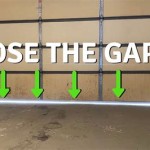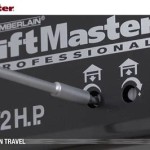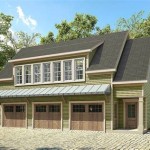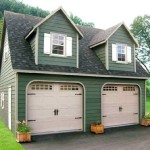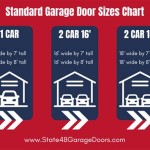Air Compressor Lines For Garage: Selecting the Right System
An air compressor is a versatile tool for any garage, providing power for numerous applications, from inflating tires and operating power tools to spray painting and sandblasting. However, the air compressor itself is only one component of a complete compressed air system. The effectiveness and longevity of an air compressor are heavily reliant on the quality and configuration of the air lines connecting it to the various tools and accessories. Selecting the correct air compressor lines for a garage setup requires careful consideration of several factors, including material, size, connection type, and overall system design.
Efficient air delivery is paramount for optimal performance. Inadequate air lines can lead to pressure drops, reducing the power and efficiency of air tools. Investing in a well-planned and properly installed air line system minimizes these issues, extending the lifespan of both the air compressor and the connected tools.
Material Selection for Air Compressor Lines
The material from which air compressor lines are constructed significantly impacts their durability, flexibility, and resistance to environmental factors. Several materials are commonly used for air compressor lines in garage settings, each offering specific advantages and disadvantages.
Rubber Hoses: Rubber hoses are a traditional choice for air compressor applications. They are known for their flexibility, allowing for easy maneuvering around the garage. High-quality rubber hoses are resistant to abrasion, oil, and chemicals commonly found in automotive environments. However, rubber hoses tend to be heavier and more susceptible to degradation over time, particularly when exposed to direct sunlight or extreme temperatures. They may also become brittle and crack with age, leading to air leaks and the need for replacement.
Polyurethane Hoses: Polyurethane hoses offer a good balance of flexibility and durability. They are lighter than rubber hoses and exhibit excellent resistance to kinks and abrasion. Polyurethane hoses are also resistant to oils and chemicals, making them suitable for garage environments. Some polyurethane hoses are designed to be coiled, providing convenient storage and reducing clutter. While generally durable, polyurethane hoses can be more susceptible to cuts and punctures compared to rubber hoses.
Nylon Hoses: Nylon hoses are known for their high strength and resistance to pressure. They are less flexible than rubber or polyurethane hoses but offer excellent durability in demanding applications. Nylon hoses are resistant to many chemicals and solvents, making them suitable for environments where exposure to these substances is likely. However, nylon hoses can be more expensive than other options and may require specialized fittings for secure connections.
Hybrid Polymer Hoses: Hybrid polymer hoses combine the benefits of multiple materials, offering a balance of flexibility, durability, and resistance to environmental factors. These hoses often feature a blend of rubber, PVC, and polyurethane, resulting in a lightweight and flexible hose with good kink resistance and abrasion resistance. Hybrid polymer hoses are a popular choice for general-purpose air compressor applications in garages.
Copper Piping: Copper piping offers a durable and long-lasting solution for air compressor lines. Copper is resistant to corrosion and can withstand high pressures and temperatures. Installing copper piping requires soldering or brazing, which can be more complex than connecting hoses with fittings. However, a properly installed copper piping system can provide a reliable and leak-free air supply for many years. Copper piping is often used for main distribution lines in larger garage setups.
Black Iron Piping: Similar to copper, black iron piping offers excellent durability and resistance to high pressures. Black iron piping is typically less expensive than copper but is more susceptible to corrosion, especially in humid environments. Black iron piping requires threading and the use of pipe sealant for secure connections. While robust, black iron piping is heavy and less flexible than other options, making it more suitable for fixed installations.
PVC Piping: PVC (polyvinyl chloride) piping is a lightweight and inexpensive option for air compressor lines. However, PVC piping is not recommended for compressed air systems due to its brittle nature and potential to shatter under pressure. The risk of fragmentation in the event of a failure makes PVC piping a safety hazard. While it might seem like a cost-effective solution, the potential for serious injury outweighs any initial cost savings. The use of PVC piping for compressed air systems is generally prohibited by safety regulations in many jurisdictions.
Sizing Air Compressor Lines for Optimal Performance
The diameter of the air compressor line plays a crucial role in delivering sufficient airflow to the connected tools. Inadequate line size can lead to pressure drops, resulting in reduced tool performance and increased compressor cycling.
Understanding Airflow Requirements: The airflow requirements of the air tools dictates the minimum acceptable diameter for the air lines. Air tools are typically rated in cubic feet per minute (CFM) at a specific pressure (PSI). It's important to choose air lines that can adequately supply the required CFM without significant pressure loss. Consult the tool manufacturer's specifications to determine the CFM requirements for each tool that will be used with the air compressor.
Calculating Pressure Drop: Pressure drop occurs as air flows through the lines due to friction and resistance. The amount of pressure drop depends on the length of the line, the diameter of the line, the airflow rate, and the type of material. Longer lines and smaller diameters result in greater pressure drop. Many online calculators and formulas can help estimate pressure drop based on these factors. Aim to minimize pressure drop to maintain adequate pressure at the tool end.
General Guidelines for Sizing: As a general guideline, a 3/8-inch inside diameter (ID) air line is suitable for many common air tools used in a garage setting. However, for tools with higher CFM requirements or for longer runs of air lines, a 1/2-inch ID line may be necessary. Main distribution lines that supply multiple tools should typically be larger, such as 3/4-inch or 1-inch, to minimize pressure drop across the entire system. Always err on the side of a larger diameter if unsure, as it is better to have excess capacity than insufficient airflow.
Impact of Quick Connect Fittings: Quick connect fittings, while convenient, can also restrict airflow and contribute to pressure drop. Choose high-flow quick connect fittings to minimize this effect. Ensure that the fittings are sized appropriately for the air lines being used. Using smaller fittings on larger air lines can negate the benefits of the larger diameter.
Considering Future Needs: When sizing air compressor lines, it's prudent to consider potential future needs. If there is a possibility of adding more air tools or using tools with higher CFM requirements in the future, it's wise to choose larger diameter lines to accommodate these future needs. This can save time and money in the long run by avoiding the need to replace the air lines later.
Designing an Efficient Air Compressor Line System Layout
The layout of the air compressor line system significantly impacts its efficiency and usability. A well-designed system minimizes pressure drop, provides convenient access to air outlets, and ensures safe operation.
Linear vs. Loop Systems: There are two primary types of air compressor line system layouts: linear and loop. A linear system involves a single main line running from the air compressor to the various air outlets. A loop system, on the other hand, creates a closed loop of air lines around the garage, with air outlets connected to the loop. Loop systems generally provide more consistent pressure throughout the system and are less susceptible to pressure drop, especially in larger garages. The loop system provides air from two directions reducing pressure loss.
Strategic Placement of Air Outlets: Position air outlets strategically throughout the garage to provide convenient access to compressed air wherever it is needed. Consider the types of projects that will be performed in different areas of the garage and place outlets accordingly. Mount outlets at a comfortable height to avoid bending or stooping. Use multiple outlets to avoid the need for excessively long air hoses, which can contribute to pressure drop and clutter.
Using Air Line Reels: Air line reels offer a convenient and organized way to manage air hoses. They keep hoses off the floor, reducing the risk of tripping and preventing damage to the hoses. Air line reels can be mounted on walls, ceilings, or benches. Choose reels with adequate hose length and consider retractable models for easy storage. Ensure that the hose reel is rated for the pressure and airflow requirements of the air tools being used.
Incorporating Moisture Traps and Filters: Compressed air often contains moisture and contaminants that can damage air tools and affect the quality of paint finishes. Install moisture traps and filters in the air line system to remove these impurities. Place a moisture trap near the air compressor to remove bulk water and install filters near the air outlets to remove finer particles. Regularly drain the moisture traps to prevent them from becoming full and losing their effectiveness.
Slope and Drain Lines: When installing rigid piping, such as copper or black iron, slope the lines slightly downward away from the air compressor. This allows any accumulated moisture to flow towards drain points. Install drain valves at the lowest points in the system to periodically remove accumulated water. This practice helps prevent corrosion and extends the life of the air lines.
Proper Support and Securing: Ensure that air lines are properly supported and secured to prevent sagging and stress on the connections. Use pipe straps or clamps to attach the lines to walls, ceilings, or other structural elements. Support lines at regular intervals to prevent them from vibrating or rubbing against surfaces, which can cause wear and tear. Proper support also helps prevent accidental damage to the lines.
Testing for Leaks: After installing or modifying the air compressor line system, thoroughly test for leaks. Pressurize the system and listen for hissing sounds, which indicate air leaks. Apply a soapy water solution to all connections and look for bubbles, which confirm the presence of leaks. Repair any leaks promptly to prevent wasted energy and maintain optimal system performance.
Choosing the right air compressor lines for a garage involves a careful assessment of material properties, sizing considerations, and system design. Proper planning and installation contribute to a reliable and efficient compressed air system, enhancing the functionality and versatility of a garage workspace.

Air 3 4 In X 100 Ft Hdpe Aluminum Piping System 024 0397ia The Home

How To Diy Design Build A Cheap Shop Air System Youtube

Air 3 4 In X 100 Ft Hdpe Aluminum Piping System 024 0397ia The Home

Air Compressor Plumbing How To Installing Hose In The Miller Garage Ultimate Man Shop

How To Guide Installing An Air Compressor In Your Garage

Shop Air Compressor System Design Plumbing Complete Guide

My Compressed Air System Our Home From Scratch

How To Run Compressed Air At Home Grassroots Motorsports Forum

Air Compressor Lines Garage Water Separator Manifold Dryer Youtube

Air Compressor Lines Garage Water Separator Manifold Dryer

